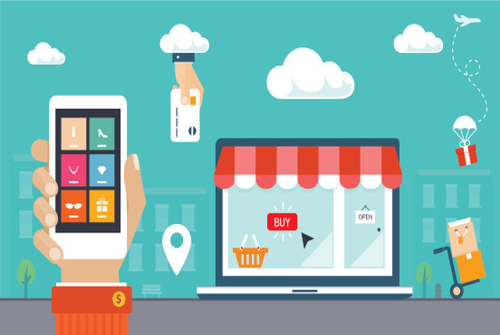Four Obstacles to B2B eCommerce & ERP Integration Success

Regardless of what type of industry a company is in, they need to always be able to connect to any ERP that they require.
It shouldn’t matter whether that’s Shopify or NetSuite as an eCommerce platform, companies need modern integration software that allows them to deliver everything faster to customers.
The problems, however, occur because there still are many companies out there who for one reason or another have not yet invested in modernized technology.
Companies that have an eCommerce ERP integration strategy are the ones who have embraced modernized technology and recognize not only the potential ways they can eliminate errors and streamline efficiency, but improve the way they manage their customers and deliver exceptional customer service.
In order to get there, however, there are a handful of obstacles companies must overcome in order to truly gain a well-run eCommerce ERP integration platform.
Not Understanding Requirements
A major issue that companies face happens before they’ve even begun to utilize a centralized integration platform. Companies often aren’t sure where to begin, and are unclear as to just what is required of them in order to successfully manage integrations both internally as well as externally to the members of their digital ecosystem, from trading partners to customers.
The process can feel overwhelming, as IT managers worry whether they have the IT staff to support and maintain an integration platform on top of all the rest of their regular duties. There is also the concern whether migrating data from one system to another will result in errors, security risks, or data loss.
Before embarking on this integration modernization journey, companies must align internally and determine what they are trying to achieve with integration, what challenges they must address, and what systems they plan on integrating. Going a bit further, companies need to recognize what data should be synchronized between the systems as well as what processes and workflows can and should be automated.
Outdated and Legacy Systems
While everything might appear to work as usual on the service, the fact remains that relying on legacy and outdated technology causes companies to drop and miss orders because their technology doesn’t provide end-to-end integration visibility for every single online order. Compared with a modern integration platform, legacy systems are clunky and downright hard to work around.
Sometimes the tools and systems you’ve relied on for years just work for your business and will continue to meet your daily business needs for the foreseeable future. But when you’re ready to bring on new partners and services, migrate applications to the cloud, or support big data initiatives, legacy systems may not provide the capabilities that are required to be successful. If you are receiving charge backs from your trading partners or if your system is decade old, it is likely time to consider modernizing your eCommerce solution.
Lack of Multichannel Management
Traditionally, an eCommerce platform provides companies with the technology that allows a merchant to sell to their customers on their very own website through a regular web browser. This fails to take into consideration a couple of things, however.
- For starters, retailers also sell through many other channels, such as call centers, brick and mortar stores, mail order catalogs, online marketplaces, and other websites, just to name a few.
- Customers want to buy using their own devices, whether it’s an iPhone or their personal laptop, so there will be a constant challenge that is associated with getting master data that can sync up with the other systems associated with those customer touch points.
Where’s the Visibility?
Companies who have yet to modernize their solution are going to be faced with a lack of visibility which prohibits them from being able to make real-time decisions based on performance. By consolidating legacy integration systems in order to streamline business processes, companies can centralize the amount of control they have over a piece of data and gain end-to-end visibility.
Once companies have fully embraced a modernized integration platform, they can begin to gain complete visibility for every single online order. Think of the value gained from total omnichannel integration visibility in one single place. This allows companies to unify online, retail, and wholesale orders in a single view with API-based integration and EDI.
So…How do I Modernize my eCommerce Platform?
While these challenges that we’ve outlined above might seem daunting, the reality is with the right partner by your side, not only do they not need to be daunting, they can actually be quite simple to overcome.
Cleo Integration Cloud provides eCommerce integration software that is done right. Grow your sales with an integration platform that is designed to power direct-to-consumer, omnichannel, and digital shopping experiences.
Accelerate any eCommerce omnichannel or marketplace initiative with faster time-to-revenue through out-of-the-box connectors, pre-defined templates, and robust APIs to integrate any direct-to-consumer channel.
Simplify eCommerce operations, improve team efficiency, and eliminate manual steps with complete automation and orchestration of your order-to-cash process, from digital store front to ERP, CRM, or fulfillment system.
Don’t hesitate – contact us now to learn more and begin your modernization journey.

About Cleo
